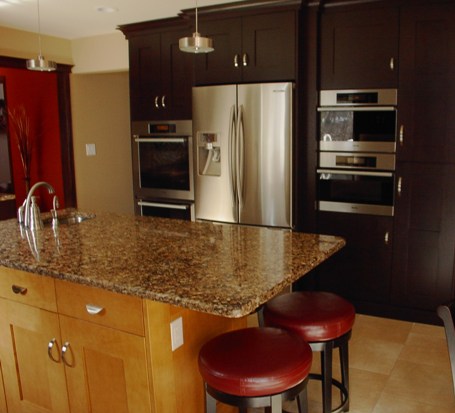Radon is a chemical gas that is found in soil, rocks, the sun’s rays, the water we drink, and the air we breathe. It’s pretty much all around us all the time, threatening our bodies with harmful levels of exposure. The biggest contributor to indoor radon comes naturally from the soil beneath and surrounding homes. It raises concerns when considering the origin of granite because it seems that emissions and direct contact would be an obvious hazard. With a little education, you’ll feel at ease understanding the truth about household granite and the safety of your loved ones.
Where Does Radon Come From?
The undetectable, radioactive gas is naturally present throughout our environment and in most homes to some degree. Unfortunately, people that do not understand the risk typically fail to have adequate indoor air quality testing that would alert of dangerous levels. It’s emitted from the soil layer and is believed to be present in natural stones, such as granite. When it’s outside in the environment, exposure is so low that it doesn’t cause any harm. In fact, the Marble Institute of America states “There are many sources of radiation in a typical home. Common items such as concrete blocks, televisions, smoke detectors — and even Brazil nuts, bananas and potatoes release measureable levels of radiation. The fact is, radiation and radon levels from other sources in the home are far more significant than what may be measured from a granite countertops. Consumer and industry safety are paramount issues for the stone industry, and numerous studies have been conducted to verify the safety of granite in the home.”
Is my Granite Countertop Safe?
Respected scientists conducted several conclusive tests on household granite countertops to determine the presence of radon. The absolute highest sample proved to have acceptable radon levels as specified by EPA guidelines. It is safe to allow your family to use the granite countertops for cooking and enjoying meals the same as any other sanitary surface. If a home does contain a considerable level of radon, it is primarily caused emission from ground soil. If there are concerns with indoor air quality, it is the best solution to have radon testing done, and then complete any necessary home improvements.
Radiation in Granite is not Dangerous
Installing natural stone inside the home does not bring in a considerable amount of radioactive material, and there is no reason to feel concern over using your existing countertops for any reason. Dangerous elements do not transfer to foods prepared on the surface, and your family is not at risk from simply touching it. The EPA states “Since granite is generally not very porous, less radon is likely to escape from it than from a more porous stone such as sandstone. It’s important to know that radon originating in the soil beneath homes is a more common problem and a far larger public health risk than radon from granite building materials. Also, any radon from granite countertops in kitchens or bathrooms is likely to be diluted in the typical home since those rooms are usually well ventilated.”
For more information about Granite and Radon please view the following resource:

